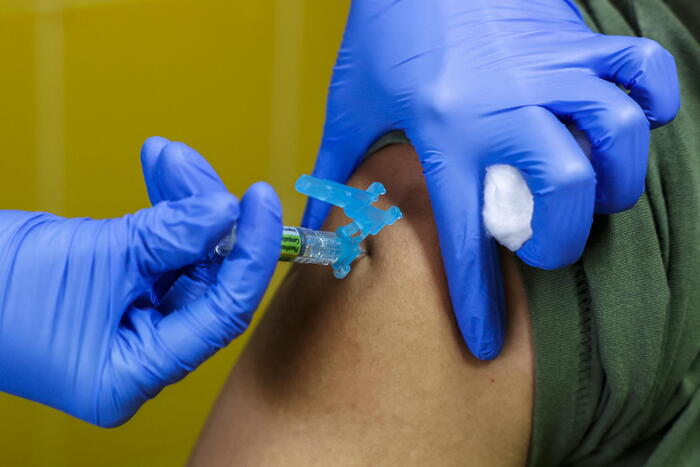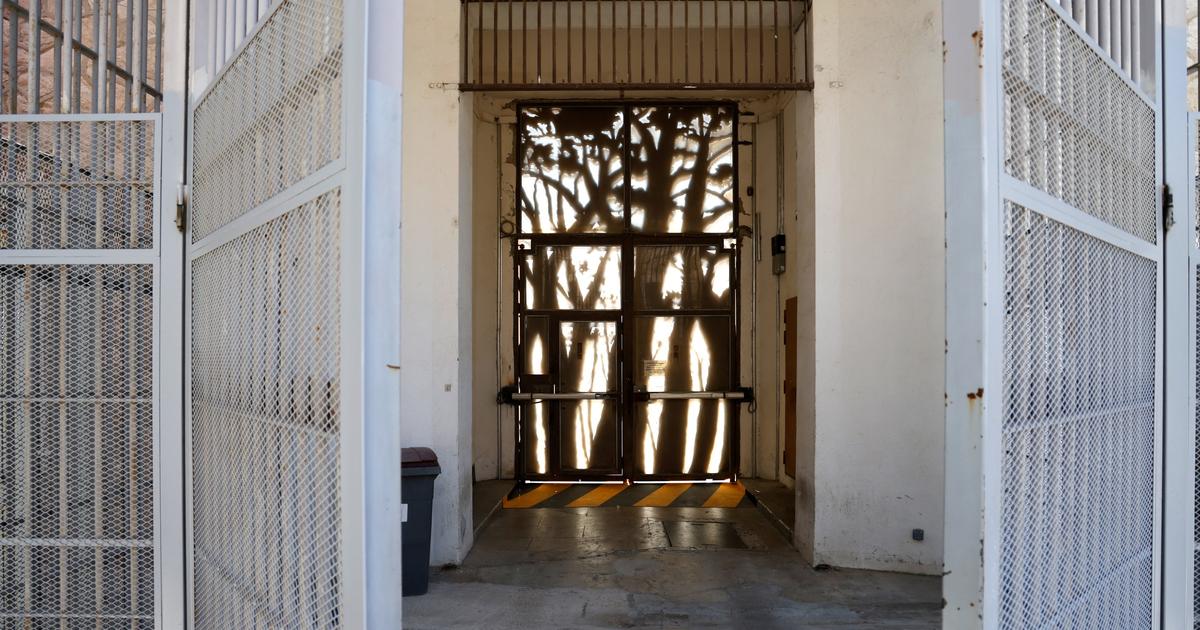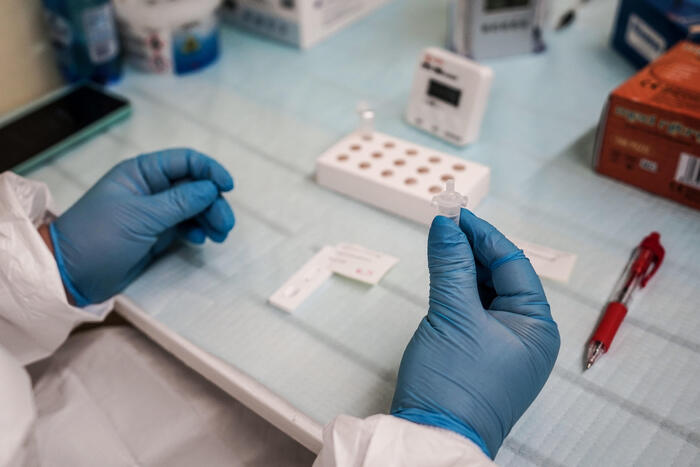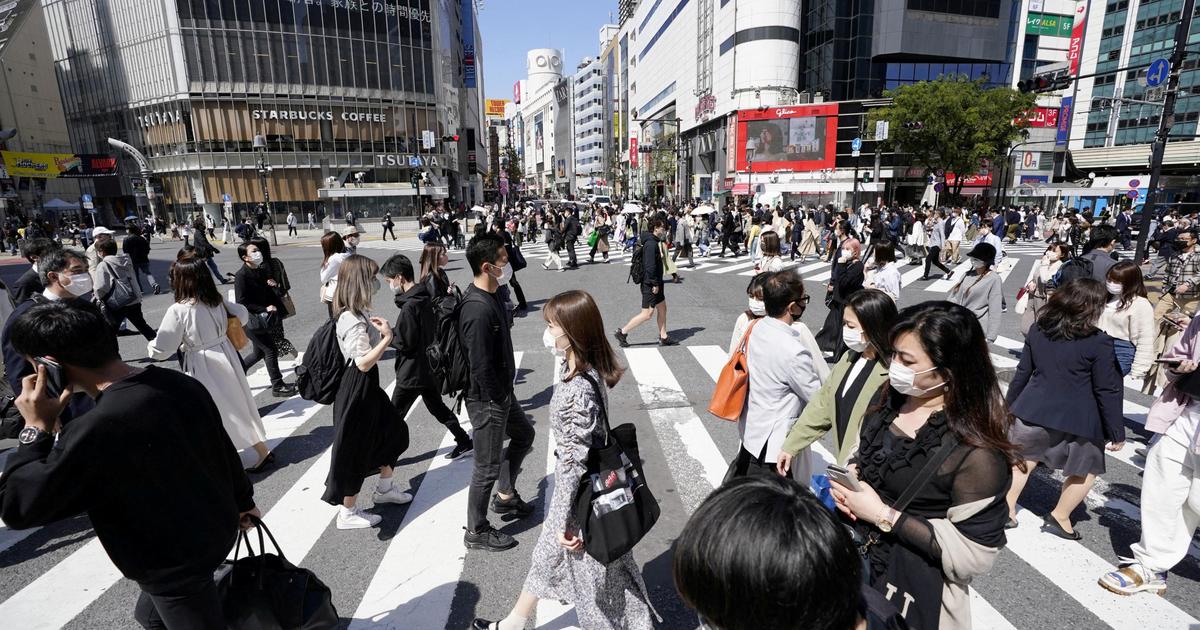The symbolic threshold of 100% has just been crossed.
The "intensive care occupancy rate" is now 110.7% in the Auvergne-Rhône-Alpes region, where the health situation is particularly critical, according to the government website.
But how can we achieve such a ratio that exceeds 100%?
Everything is explained by the method of calculation.
Explanations.
Initial capacity of resuscitation beds
First of all, the intensive care occupancy rate is based on the initial bed capacity, the Ministry of Health and several regional health authorities (ARS) tell us.
However, this capacity has varied a lot since the start of the Covid-19 pandemic.
From 5,100 beds in normal times, we have now risen to just under 6,400, according to our information.
And this figure will increase further in the next few days and weeks, since Emmanuel Macron announced on October 28 that the capacities would be "increased beyond 10,000 intensive care beds" to cope with the influx of patients during this second wave.
The Minister of Health Olivier Véran has, on several occasions, mentioned the possibility of going up to 12,000 places.
As the darkest projections predict up to 9,000 patients in serious condition in mid-November in France, the intensive care occupancy rate could very quickly also exceed 100% nationally.
READ ALSO>
Covid-19: contaminations, resuscitation, death ... is the “second wave” worse than the first?
A source at ARS Auvergne-Rhône-Alpes justifies this method of calculation by the fact that it makes it possible to keep a common denominator and therefore to better follow the evolution of the situation in hospitals over the days.
"What interests us is not whether we are at 100 or 200% every day, but to see how it evolves", we add to the ARS Île-de-France.
Several “critical care” services
Another pitfall: one might think that the occupancy rate represented the number of beds occupied by Covid-19 patients in intensive care units compared to the number of beds available in intensive care.
In reality, this is the number of beds occupied in intensive care, intensive care, or continuous surveillance, the three departments where serious cases are taken care of, compared to the number of beds initially available in intensive care.
This is indicated by the precise title of this indicator in the Public Health France database.
This also corresponds to the figures available: with 3,569 patients in intensive care, intensive care or continuous monitoring (which is grouped under the heading "critical care") this Sunday in France for an initial capacity of around 5 100 intensive care beds, we arrive at the posted occupancy rate approaching 70%.
In Île-de-France, which lists 1,130 intensive care beds in Ile-de-France in normal times and where 939 in critical care are taken care of this Sunday, this gives an occupancy rate of just over 83 %, according to the data communicated to us by the ARS.
PODCAST. Covid-19: how France sees the arrival of the "second wave", our reporter tells
However, all inclusive, there are not 5,100 but almost 19,000 beds in initial capacity.
In addition to those for resuscitation, there are about 6,000 in intensive care and 8,000 in continuous monitoring, according to the latest data from the Directorate of Research, Studies, Evaluation and Statistics (DREES).
We must distinguish here these three categories.
In the continuous monitoring units, "we take care of patients who do not yet have organ failure, to monitor them," explains Eric Maury, professor of intensive medicine-intensive care at Saint-Antoine hospital (AP- HP).
The level above, that of intensive care, welcomes patients "who suffer from a serious failure of a single organ", according to the president of the French-language intensive care company.
Finally, the most seriously ill patients are brought into intensive care.
"Medicines, personnel and devices"
The Ministry of Health justifies adding all the Covid patients in critical care by the fact that they "are likely to require at one time or another a passage in intensive care, depending on the evolution of their condition".
Thus, the patients in critical care would already be all in beds "armed" in intensive care, but whose title has not changed.
To increase the number of intensive care beds, "three things are needed: drugs, qualified personnel for this, and devices including a respirator," explains ARS Île-de-France.
Newsletter - Most of the news
Every morning, the news seen by Le Parisien
I'm registering
Your email address is collected by Le Parisien to enable you to receive our news and commercial offers.
Learn more
The fact remains that it is not possible today to know, among the 3,569 Covid patients in critical care in France, how many occupy beds planned from the outset for intensive care.
"Taking into account the initial capacity of resuscitation beds makes it possible to measure the level of pressure exerted on the health system by the influx of severe forms of Covid, and therefore on the resuscitation teams who take care of these patients", concludes the Ministry of Health.















